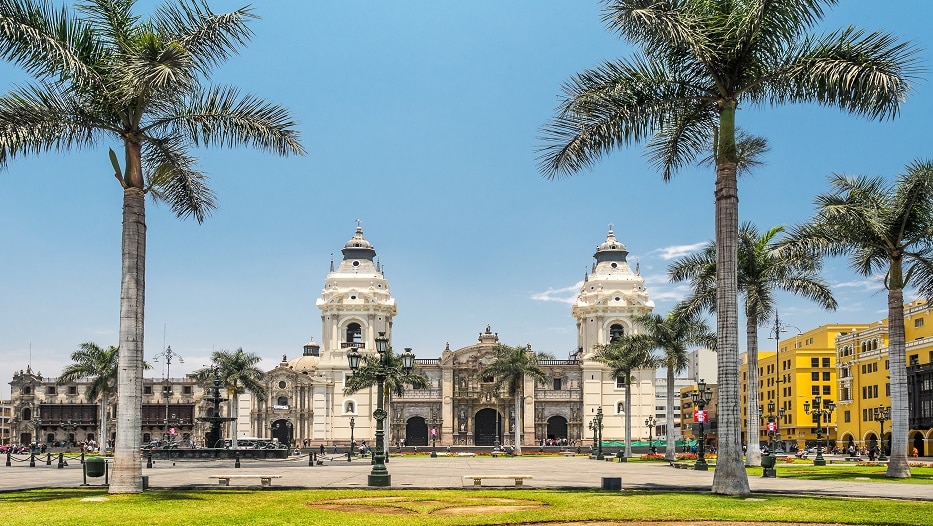Adán Cubillo Hurtado | 24/03/2022
As Aurelia Ramírez Quiroz – Manager of the Chamber of Commerce of Peru in Spain – explains, investment is a fundamental component of the country’s economic development, as it represents about a quarter of annual GDP. Although the impact of the pandemic affected these figures, as in the rest of the world, the region is achieving a firm recovery that could lead to pre-pandemic levels by the end of 2022.
Could you give us a brief overview on the impact of the pandemic in the country? How is the recovery progressing?
As in other countries, it generated serious losses in the economy, which added to a political element characterized by uncertainty. The pandemic hit the biggest drivers of the economy: Public Investment, Private Investment –which fell by about 27%–, Exports –shrunk by 13% despite the improvement in the price of minerals and the solid growth of the agroexport sector– and Internal Consumption. On the other hand, the fiscal deficit increased fivefold and, for the first time in the last few decades, Peru over-indebted itself.
This generated a recession of 11.2%, comparable only to that of 1880 (War with Chile). In Latin America, we were the economy with the second-deepest recession, surpassed only by Venezuela (25%). There was a triple crisis: health, economic and political. Our weaknesses were exposed and important lessons were learned, hopefully.
However, the strength of the Peruvian financial system and the measures taken enabled the country to mitigate the macroeconomic risks caused by the health crisis. To avoid the breakdown of the payment chain, the Central Reserve Bank of Peru (BCRP) reduced the monetary policy rate to its historical lowest level. In 2021, real GDP bounced back strongly and grew by 13%, returning to its pre-pandemic level. This growth was driven by the recovery of domestic demand and exports, the easing of mobility restrictions, an accelerated execution of public works and the resumption of private investment projects.
How has it affected the inflow of investment? What is the current situation and where did it come from?
Investment is an important component of the Peruvian GDP. According to BCRP figures, it has comprised about a quarter each year over the present decade, so it is the second most important component after private consumption. Private investment dynamizes the economy, as a greater flow of it increases employment levels and boosts consumption; therefore, its behavior has an impact on economic growth and social welfare.
In particular, private investment has accounted for almost 80% of gross fixed investment over the last 10 years, according to BCRP figures. However, due to the pandemic, this dropped by 13.4% in 2020 compared to 2019, although this result is expected to be reversed in subsequent years thanks to the economic recovery.
In this sense, it is important to provide optimal conditions to continue attracting foreign direct investment (FDI), since the growth of the economy depends on this. Private investment is as relevant as ever in order to ensure economic recovery, especially on the basis of a post-pandemic scenario.
What are the main incentives offered by Peru for attracting foreign investment?
In the last two decades, Peru has consolidated itself as an attractive destination for foreign investments. It has positioned itself well, thanks to the liberal trade policy developed up to the present; it is a member of the World Trade Organization, the Asia-Pacific Economic Cooperation Forum and the Andean Community, and it has more than twenty trade agreements in force, four about to come into force and six currently being negotiated.
Clearly, to attract FDI, it is necessary to have a regulatory framework that provides basic guarantees. In this way, Peru recognizes equal treatment for both domestic and foreign investments, which is a guarantee established in its Constitution.
Could you tell us about that regulatory framework?
Legislative Decree No. 662 recognizes the guarantee for foreign investors to be able to freely transfer the totality of their capital – after having paid due taxes, as well as the dividends or net profits arising from their investment in the country – abroad and without any government authorization requirement. In addition to the provisions of the national legislation, the State has ratified international agreements with the aim of providing greater security to foreign investments. Without a doubt, the most important of these agreements is the Washington Convention and the subjection of the Peruvian State to the International Center for Settlement of Investment Disputes (ICSID).
In addition, Peru has signed several bilateral investment treaties with countries in its region (Argentina, Chile, Colombia, among others) and in other continents (Germany, France, the United Kingdom, China, among others). In this regard, it is important to mention the Bilateral Investment Treaty (BIT) signed by Peru and Spain (1994), which establishes that the parties will guarantee fair and equitable treatment of the investments of the other contracting party within their territory.
These international instruments complement the domestic guarantees. A legal stability that has led the country to be considered as one of the most attractive emerging countries to invest in in Latin America, supported by fiscal solvency, net international reserves, efficient economic and regulatory management and excellent performance in the international markets.
Where do the main injections of capital come from?
For more than four decades, Peru has received significant FDI flows due to its trade integration with different economies in the world. With regard to its evolution and composition, accumulated FDI between 2010 and 2020 amounted to US$86,306 million, which shows the attractiveness of Peru for investment from both foreign and local companies, which in recent years have facilitated investments in multiple sectors of the country, generating employment.
Thus, in the decade mentioned, the year in which the greatest disbursement was made was in 2012, with US$13,622 million. While in 2020, the year in which we were hit by the crisis caused by the pandemic, foreign direct investment recorded US$3,141 million, which represented a 64.7% decline compared to 2019.
According to official and private indicators, among the countries with the highest disbursement in FDI are Spain, the United Kingdom, Chile, the United States and the Netherlands.
What are the sectors of interest today?
Peru is undoubtedly one of the most attractive countries in terms of investment opportunities in strategic sectors such as mining, infrastructure, energy or agribusiness. There are projects underway and investment commitments with foreign presence until 2025 in the mining sector for US$58,092 million, transport sector (US$13,684 million), electricity sector (US$8,358 million) and the hydrocarbons sector for US$5,110 million.
In addition, we have investments in the technological innovation, communications, tourism, food and services sectors. In general, the country is extremely attractive in virtually all production sectors.
Can you tell us about projects in the making or in their startup phase that are boosting investment?
The official investment promotion agency has several projects in its portfolio. Highlights include the Peripheral Road Ring (with a value of US$1,965 million), the Ancón Industrial Park (US$750 million), the Headworks and Conduction Works for the Drinking Water Supply in Lima (US$480 million) and two new Essalud Hospital Centers in Piura and Chimbote (US$286 million). There are also other plans in the area of roadworks, water and sanitation, telecommunications, electricity transmission and education, such as in the construction of high-performance schools.
Construction has been pointed out as one of the sectors that will boost the country’s economic recovery; could you give us an assessment of the country’s infrastructure and road work potential?
Peru has implemented various mechanisms for the promotion of investments in these sectors, such as Public-Private Partnerships, the mechanism of Works by Taxes and, most recently, the Government-to-Government Agreements, which have as a common characteristic the purpose of stimulating and promoting the participation of international and local investors in infrastructure projects. This allows the region to benefit from the experience of other countries in the implementation of projects of great magnitude and complexity. In addition, it has the support of a foreign State with recognized levels of transparency, so that the work contracted is completed in terms of timeframes and quality standards.
The National Infrastructure Plan (2019) defines a vision and objectives for the closure of infrastructure gaps by the Peruvian State; for this purpose, 52 projects have been prioritized. In total, they add up to an investment of approximately US$30 billion. Of these, almost half are currently in the stage of contractual execution, and many of them are experiencing delays in the investments. Meanwhile, the other half is pending to be awarded and/or at different stages of the bidding process. It should be noted that 60% will be executed through an APP [Asociación Público Privada (Public-Private Partnership)]. Fulfilling the schedule, as a country, for the granting of new projects announced, to both national and international investors, will also contribute in driving the economic recovery.
In particular, how does Spanish investment contribute to the Peruvian economy?
Spain is a preferential partner, there is a commitment and vocation for the presence of Spanish companies in the Peruvian market in key sectors such as telecommunications, infrastructure, energy and agribusiness. With regard to FDI, Spain has been the number-one investor in Peru, followed by the United Kingdom, USA and Chile, while China has been taking a significant role in the last few years.
Peru is currently the fifth destination country for Spanish investment in Latam in terms of accumulated FDI stock for an approximate value of €4.6 billion. It is worth highlighting the potential and competitiveness of Spanish companies in the sectors in question, both large companies as well as SMEs. To date, there are more than 800 Spanish companies set up in Peru, which are a good example of the commitment they have in being an active part of the modernization of the Peruvian economy and the creation of jobs, generating more than 450,000 direct and indirect jobs across the country.
What are the prospects for economic activity in the country?
By the close of 2022, the Peruvian economy is projected to continue recovering, with growth of 2.5% of GDP expected, driven by the recovery of domestic demand and exports. On the other hand, the fiscal deficit is expected to decrease to 3.5% by the end of the year, in line with fiscal targets.
Economic growth is projected to return to pre-pandemic levels, at a rate of approximately 3% per year, as the forecast optimal external conditions would be partially offset by the effects of political uncertainty. Overcoming structural challenges related to widespread informality, limited economic diversification, and low quality public services in sectors such as Health, Education, and Water and Sanitation will be a critical factor in improving medium- and long-term growth prospects.
Finally, it is necessary to emphasize that, despite the pending challenges and aspects of improvement, Peru has institutional strengths that guarantee equitable and safe treatment for investors, and that places it in a position of privilege among its neighboring countries.

Aurelia Ramírez Quiroz holds a Bachelor of Law and Political Sciences degree from the Pedro Ruiz Gallo National University in Lambayeque (Peru). She holds a Master’s degree in International Trade and Finance from the University of Barcelona. She is currently the Manager of the Chamber of Commerce of Peru in Spain.
She is the author of several publications on International Trade and Port Logistics, and a lecturer to academic and business auditoriums in Peru and Spain, as well as in other countries in Latin America and Europe.





